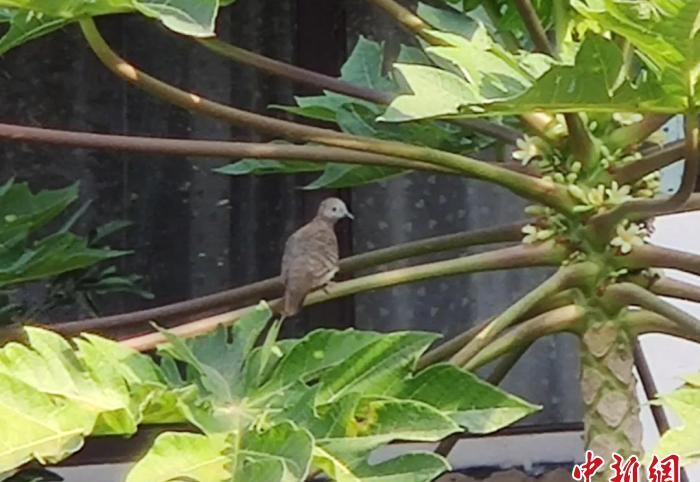
The picture shows the Spotted Dove recorded in the Man'an Apartment of the Xishuangbanna Tropical Botanical Garden of the Chinese Academy of Sciences. Provided by Xishuangbanna Tropical Botanical Garden, Chinese Academy of Sciences
Kunming, January 20 (Xinhua) -- A reporter learned from the Xishuangbanna Tropical Botanical Garden of the Chinese Academy of Sciences on the 20th that the staff of the park recently observed and photographed three spotted doves in the Man'an Apartment of the Botanical Garden, which is a new record for Chinese birds.
According to reports, the upper body of the bird photographed by the staff is mainly brownish gray, with several black horizontal stripes, the beak and face are light gray, and the tail is slender. After consulting the "Field Manual of Chinese Birds", "Ornithology of Yunnan", "Inventory of Chinese Birds Taxonomy and Distribution (Third Edition)" and "Annual Report on Bird Watching in China - List of Birds of China 8.0" and other information, it is found that its characteristics are obviously different from any bird species recorded in China. After consulting the Handbook of Birds of the World and comparing the characteristics of the spotted dove described in the book, it was found that the morphological characteristics were highly consistent and could be confirmed.
According to the data, the spotted dove is native to the Malay Peninsula, the Sunda Islands to the Philippine Islands, due to the pet trade, human introduction and natural spread, it has been recorded and even formed in Laos, Thailand, Vietnam, Cambodia, Tahiti, New Caledonia, Hawaii, Seychelles, Mauritius, Madagascar and other places.
The spotted dove is the fourth new record of Chinese birds to be found at the Xishuangbanna Tropical Botanical Garden after the brown-throated honeyeater (2009), the long-tailed parrot (2014) and the white-browed yellow-rumped plover (2019). (End)